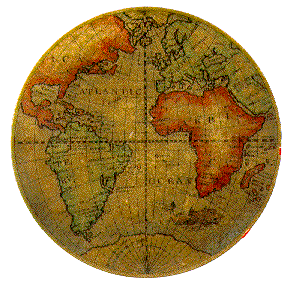
ComView...
Communications in
Perspective
by David N. Townsend
 |
|
OTHER VIEWS: THE LATEST THE LIST
The HDTV myth (1993)
Or, why can't we tell the difference between microwave ovens and electric toothbrushes? (Episode I).
(Note: I first wrote this column in 1993. I was right.)
The Japanese leap forward into commercial production and sale of High Definition Television (HDTV) is as likely to be a leap off a cliff as a bold initiative to corner a new high tech market. For certain, Sony, Matsushita, and Hitachi have succeeded in developing a viable, interesting new technology, and the Japanese investments in Columbia and Universal studios, as well as the presence of a state run broadcasting system, assure that programming will be available for the new HDTV sets' owners to watch. But the gushing excitement with which these firms have pursued this technology, as well as the ominous tones with which many U.S. policymakers have decried the potential American "loss" of the HDTV market to Japan, are hardly justified by any hard evidence that widespread consumer demand for HDTV itself, especially at exceedingly high prices, will ever materialize.
Proponents of HDTV see it as the "next" great consumer entertainment electronics revolution, following in the line of radio, black and white television, color TV, stereo, audiocassettes, cable TV, video games, video cassette recorders, and compact disc players. In particular, the rapid saturation of the market by VCRs and CDs in the 1980s, and video game systems in the 1990s, has lead some planners to envision a similar invasion by HDTV, which would leave plain-old color TV obsolete by the year 2000. They reason that consumers are (like the planners themselves) technology junkies, who can't stand merely to own something that works fine, but isn't the best of its kind available.
I don't see that this reasoning is necessarily accurate, from the experience of the technologies and products cited above. In only two instances -- the transition from black and white TV to color, and the transition from monaural to stereo sound systems -- does the historical pattern of technology adoption parallel the HDTV expectations. In those cases, consumers embraced a new product that was superior in presentation quality, but otherwise little different from its predecessor. In every other case, the new technology introduced vital differences in the nature of the product (e.g., pictures and words; ability to record), or in the functionality and convenience of the product.
This last point especially applies to CD players, which were originally sought by audiophiles for their superior sound quality compared with LPs and tapes. The broader expansion of that market, however, is far more attributable to the functional improvements of CDs over records in particular: size and durability of discs, random access and programmability functions, ease of operation, portability. And since, unlike television, music technology purchasing is concentrated heavily among younger age groups, there is always a new body of purchasers on the horizon who have no entrenched stake in the older (turntable) technology. These days, older LP collectors, whose sound systems now include CD and tape machines along with turntables, represent the last generation of vinyl disc buyers: their younger brothers and sisters have nothing on which to play records.
There is little reason to expect that HDTV will follow the CD model, nor that it will mirror VCR and cable TV penetration. These new video technologies added significantly new variety and functionality to the television entertainment medium, in addition to improving quality of presentation somewhat. Whatever great advantage the HDTV picture quality has over conventional TV, the VCR and cable experience cannot offer clues as to whether that advantage will sell the product.
So we are left with the color/black-and-white and stereo/mono precedents, which took place over a generation ago, in an entirely different market environment, and far more gradually than the more recent market revolutions. Without doubt, consumers will opt for a better picture and sound, but the question is, at what price? Color TVs and stereo systems can be found today for $200 to $300, low-end prices which were reached not terribly long after the technologies were introduced. The starting price of $35,000 for the first line of Japanese HDTV sets is obviously not intended for consumer markets, but even the predicted price of $7,500 in five years is well beyond the range at which a broad market for the technology could emerge. To induce the vast majority of consumers to invest in a nicer picture that does nothing else different than a $300 TV set, the price for the new set had better be no more than $500 on the low end. Mid-level buyers might go to $700 for the larger, more advanced sets, but only the most dedicated (and wealthy) videophiles will spring $2,000 and up for a television set.
This is not to dismiss HDTV and other technological advances as market opportunities, but rather to suggest that concentrating on picture quality alone is to avoid the more important questions of functionality. The real breakthrough market for a next generation video revolution willl depend, I think, upon the digitalization of television transmission and reception, and especially the integration of video with home computer technology. In particular, the market awaits the arrival of truly programmable digital TV receivers, and ultimately the ability to record video signals at home in digital format.
The emergence of integrated video, audio, and data Read/Write functionality in a consumer oriented product, will create the foundation for a market explosion even beyond what we saw with VCRs, cable, and CDs, and will probably accelerate the home computer market toward near universal penetration. This revolution is undoubtedly on the way, and it would behoove American electronics firms, as well as software developers and entertainment programmers, to concentrate on preparing to usher it in, rather than worrying about grabbing a piece of the elusive HDTV market.

David N. Townsend & Associates
17 Lawrence Road
Swampscott, MA 01907 USA
tel: 1-781-477-9356 fax: 1-781-593-4707
DNTA@DNTownsend.com
©1997 David N. Townsend